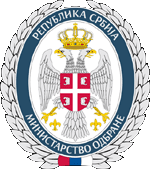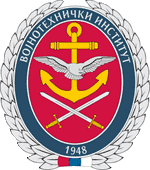|
REPUBLIC OF SERBIA MINISTRY OF DEFENCE
MINISTRY OF DEFENCE Material Resources Sector Defensive Technologies Department
|
IMPACT OF PILOT SEAT POSITION ON THE SEAT’S VIBRATION SPECTRUM ON PISTON PROPELLER AIRCRAFT
Zoran Ilić Technical Test Center, Belgrade, zoranilic_65@yahoo.com Miroslav Jovanović Technical Test Center, Belgrade, mjovano@sbb.rs BOŠKO RAŠUO Faculty of Mechanical Engineering, Belgrade, brasuo@mas.bg.ac.rs stevan jovičić Technical Test Center, Belgrade, stevanjovicic@gmail.com milutin janković Aeronautical Plant “Moma Stanojlovic”, Batajnica, jmilutin@verat.net nenko brkljač Technical Test Center, Belgrade, nenko.brkljac@vs.rs miroslav blažanović Directorate of Standardization, Codification and Metrology, Belgrade, blazmir@gmail.com
Abstract: Vibrations that exist on a pilot seat of the aircraft adversely affect the mental and physical condition of the pilot and increase fatigue of human body. Therefore, it is necessary to continually work to increase the comfort of pilots and reduce vibration that affect on the pilot seat. The position of the body in a cabin of piston propeller aircraft "Lasta" can be set by lifting or lowering the seat. No matter of physical constitution of the pilot, the most convenient position of the seat during the flight can be set. This paper presents the results of an experiment in which the vibrations were measured on the seat that mounted in different positions. The spectrums of vibrations that exist on the pilot seat were analyzed in the operating frequency of rotation of the propeller from 0 Hz to 200 Hz. The research was related to the vibrations that occur at maximum revs the engine and propeller of 2700 RPM. Vibrations with the largest amplitudes are generated on the fundamental propeller rotation frequency and harmonic multiples of the propeller rotation frequency, which is characteristic of the piston propeller engine work. The research is based on the vibration amplitude analysis at oscillation frequencies of 1st, 2nd, 3rd and 4th harmonic multiples. Fundamental propeller rotation frequency for the engine speed value of 2700 RPM is 45 Hz. The impact of change in the position of the pilot's seat on the seat’s vibration spectrums in direction of axises X, Y, and Z in each analyzed harmonic of oscillation was defined. Keywords: Lasta aircraft, piston engine, pilot seat, vibration spectrum, propeller rotation frequency .
|
|||||
|
||||||

